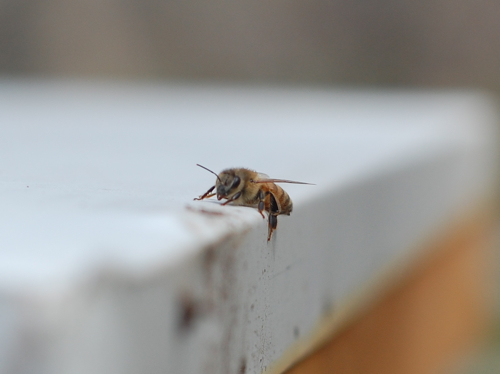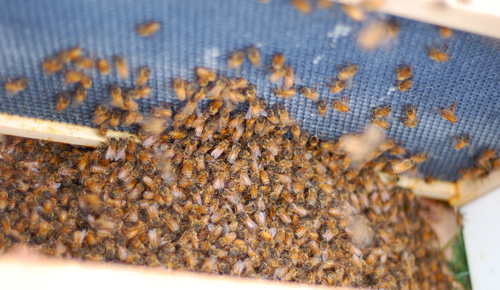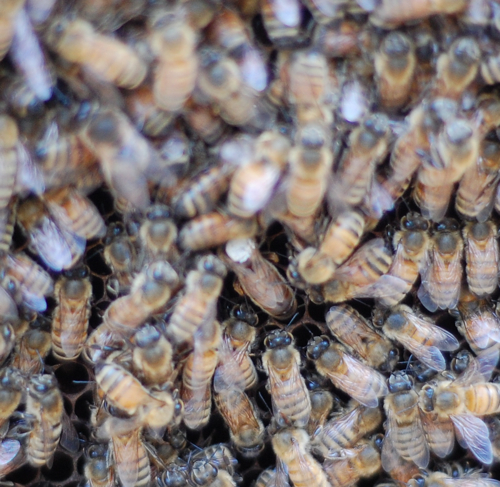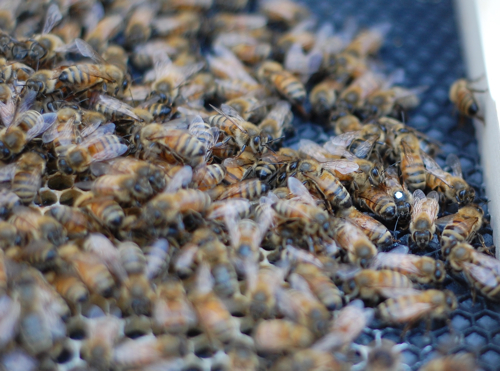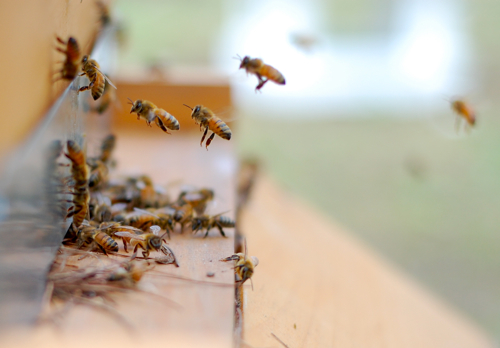I'm in a quandary with my beehives and my love of birds.

On my way out to the Horicon Marsh Bird Festival, I stopped at Mr. Neil's for a quick check of our new beehives and some birding. The warblers have arrived and the cool weather has forced those who arrive early in migration to search for alternate sources of food. Yellow-rumped warblers like these would prefer insects. Far too cool and far too few available, so the enterprising early migrants explored the bird feeders.

Despite the fact that Baltimore orioles are in the area and singing, none came to the feeders. Yellow-rumps gladly took advantage of the grape jelly.

The warblers even jockeyed for position at the suet feeder among the four species of woodpecker that normally feed here.

Pine warblers are also hitting the feeders. Whereas the yellow-rumps go for the suet and jelly, the pine goes for sunflower hearts. It will also go for the suet, but seems content to eat the seeds.

While I was working around the garage, I noticed Neil's groundskeeper Hans had put out some old bee frames. We do this so the bees from active hives will fly in and clean out the old honey. These frames were from the hives that died over the winter. The bees found it. While I was working around the garage, I noticed warbles hanging out in the area. At first, I thought the warblers were after the live bees and even said allowed, "I know you're desperate for insects, but you're far too small for eating bees."

Then, right about dusk when the honeybees were all tucked in their hives for the day, I noticed the warblers on the frames, pecking at them. The light was dim but thanks to the auto timer on my Nikon D40 I was able to digiscope a Nashville warbler and a yellow-rumped warbler on the frames.

Based on the holes in the frame it looked like the warblers were going for dead bees. Some of the frames had capped larvae that never hatched, so I figured the warblers were after the protein of old squishy non-hatched larvae. We had more frames of dead larvae and honey in the garage so I set more out. I figured the warblers could clean out the larvae and the bees could clean out the honey and help get a head start on their hives for the season.

The next morning when I went out for some birding, I checked the frames, they were covered in warblers. Above are two yellow-rumped warblers and one Nashville warbler. These were a small cross-section of about two dozen warblers waiting in line to feed off of my old beehive frames. There were at least four species in the flock, the above two and pine warblers and orange-crowned. I didn't get photos of the other two species, but got plenty of shots of the feeding frenzy.

Here are four warblers on one frame. As I took pictures and watched them feed, it became clear that old bee larvae was not the only sustenance they were after. They were very certainly eating honey. I had a moment of panic...should birds be eating honey? Honeybees are a fairly new species to North America, they came over with the early settlers. Warblers did not evolve with honeybees. Could they safely process honey and still migrate?

As I watched them I noticed that they tugged and chipped at wax foundation too. Is that safe? I've seen honeybees that have built comb out in the open on a bare branch, I remember seeing some abandon ones in Arizona and Texas...perhaps warblers have had exposure to this.

The air was so cold and their food scarce, I didn't want to take this source of food away if they were still trying to load up for their journey north. I couldn't find anything about it on the Internet other than not using honey as a means to make nectar. I wanted to plant myself in front of the frames all day long see how many species of warbler would come in but I had to go.

I also noted that as the sun got higher in the sky and our honeybees became more active, the bees didn't tolerate the warblers in close proximity and chased them off. A few warblers still came in for the bounty but not four on a frame like at dawn.

I'm not sure if this is a good thing but if the warblers figured honey out, no doubt other birds will and I don't know if they should. We already had one casualty of a tufted titmouse getting covered in honey while it explored some of our dead beehives. I'm going to have to seek out an avian nutritionist to find out if this is a safe thing to offer birds. If it is, this may be a new way to enjoy birds and bees and a new product to offer at bird stores.
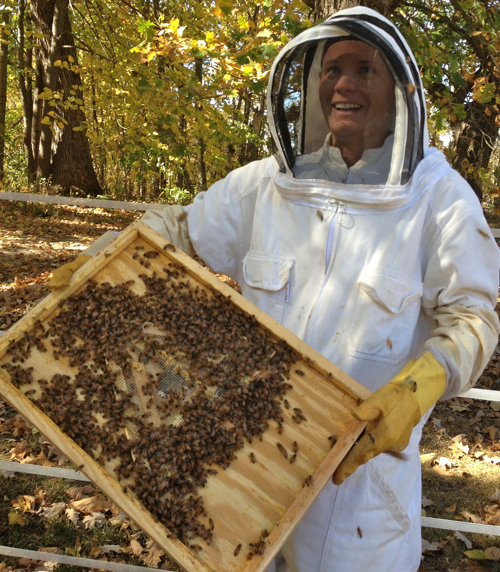









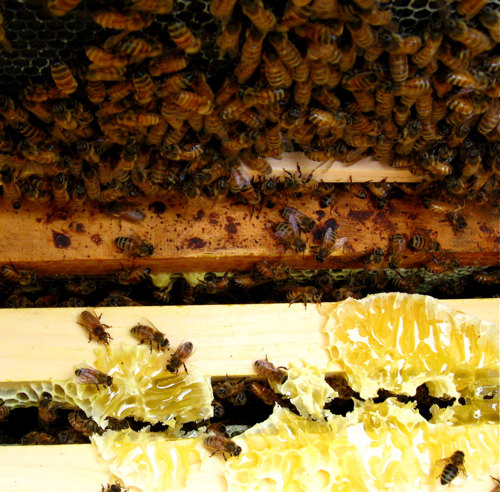 After having all of our beehives die this past winter, it's so nice to finally have a warm spring day and look in to see bees industriously tending brood and filling up empty comb. Our Italian bees are filling up hives like crazy, but the Russians and Carniolans are at a slow and steady pace.
After having all of our beehives die this past winter, it's so nice to finally have a warm spring day and look in to see bees industriously tending brood and filling up empty comb. Our Italian bees are filling up hives like crazy, but the Russians and Carniolans are at a slow and steady pace.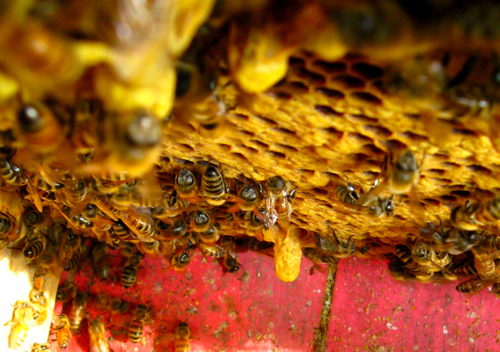 Russians are known for smaller hives and to always have queen cells on hand to replace a failing queen if need be. Even though this Russian hive had plenty of space, she had queen cells ready to go. I doubt she'll swarm, but if she does, we have an empty hive near by that they are welcome to move into. It was just Non Birding Bill and I out at the hives this time and we noted that the Russians make more noise than our other hives, but didn't bonk us to warn us they were about to sting.
Russians are known for smaller hives and to always have queen cells on hand to replace a failing queen if need be. Even though this Russian hive had plenty of space, she had queen cells ready to go. I doubt she'll swarm, but if she does, we have an empty hive near by that they are welcome to move into. It was just Non Birding Bill and I out at the hives this time and we noted that the Russians make more noise than our other hives, but didn't bonk us to warn us they were about to sting.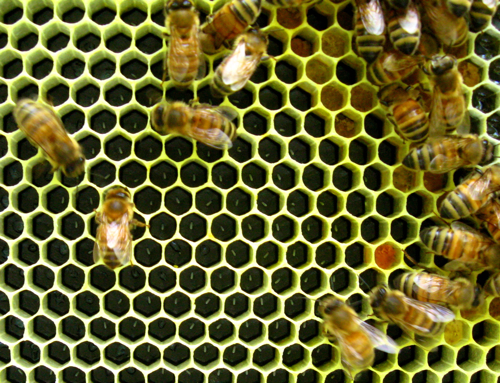
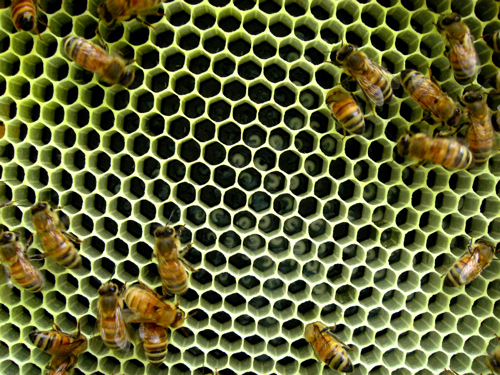
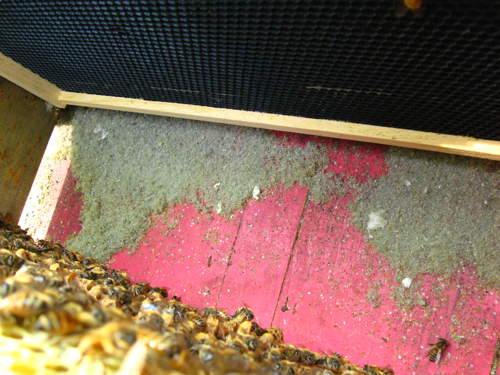
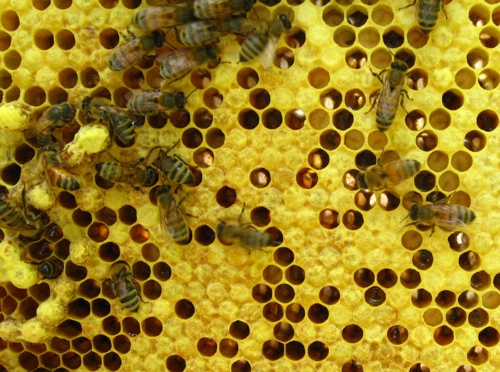
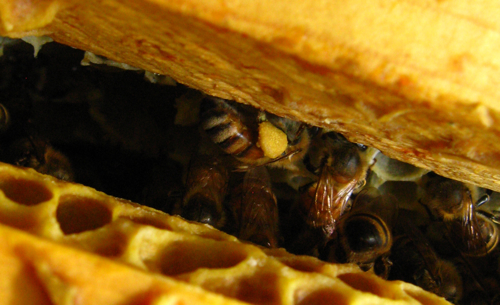
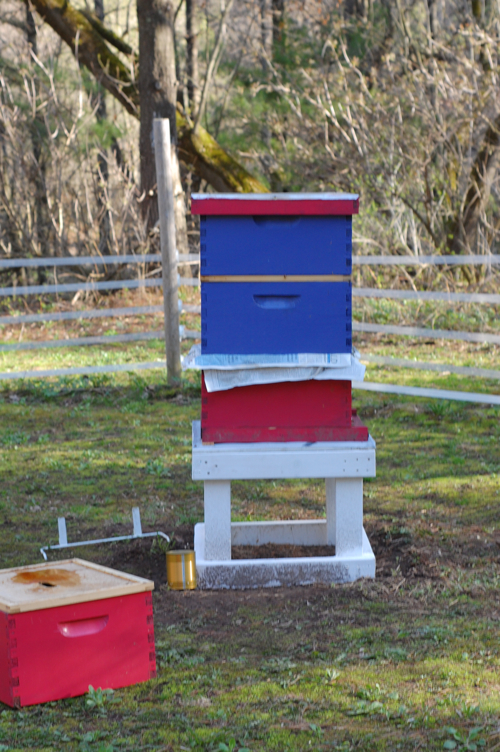
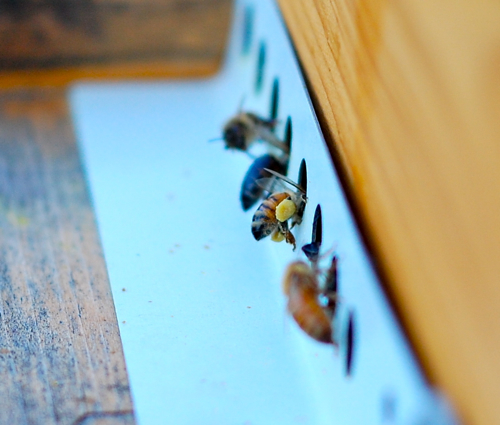













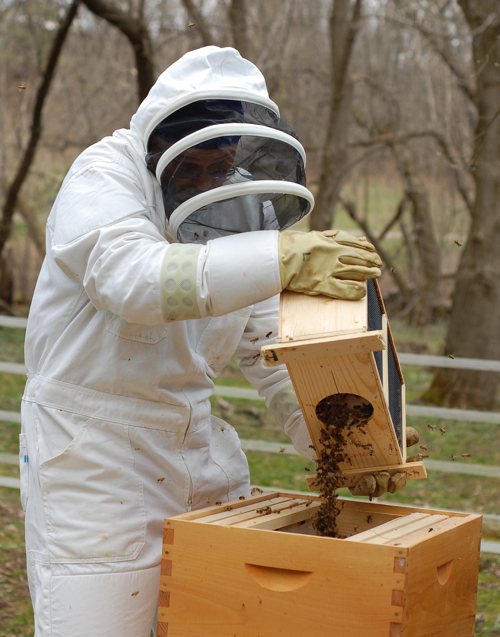 This is
This is 